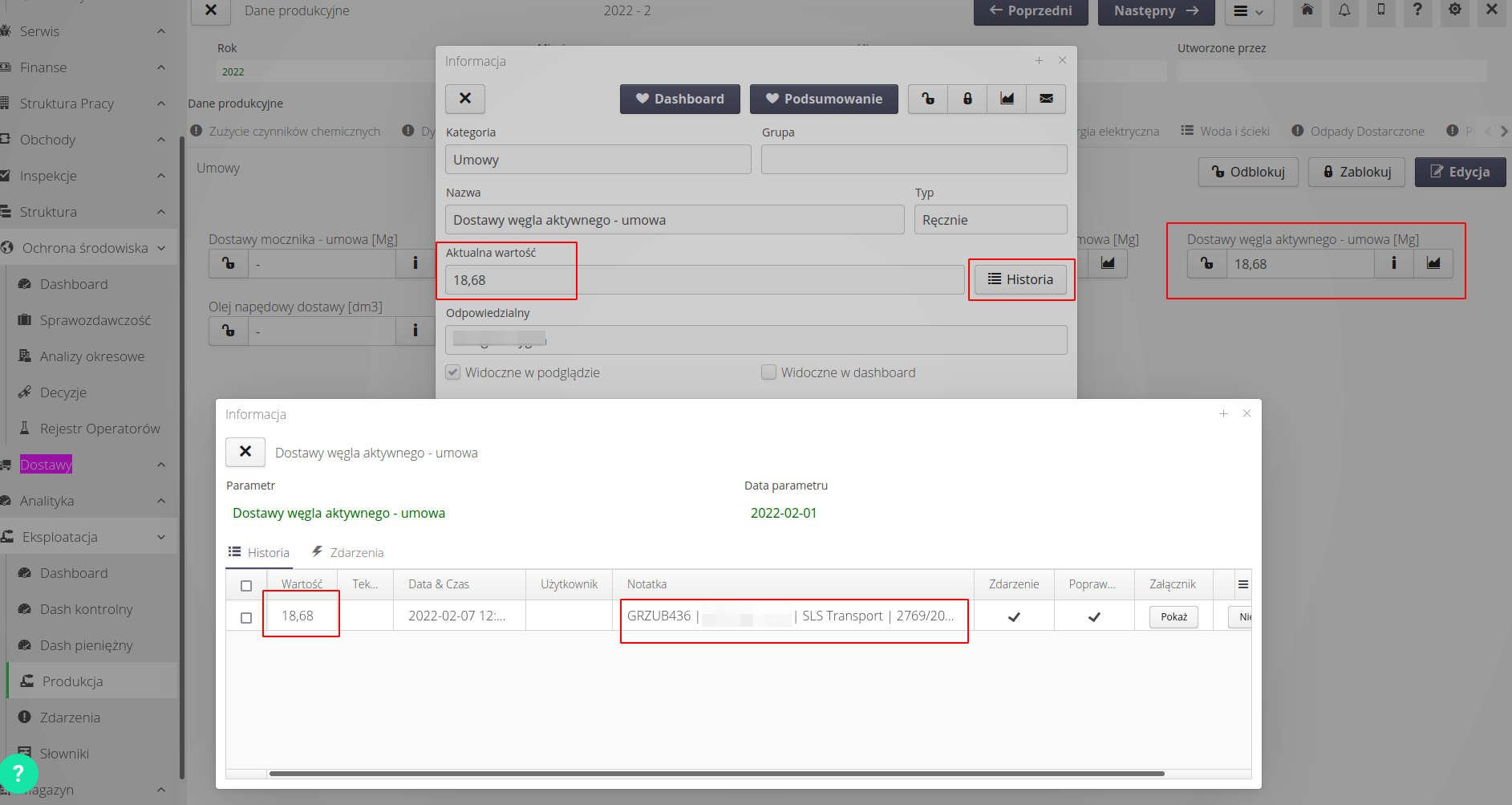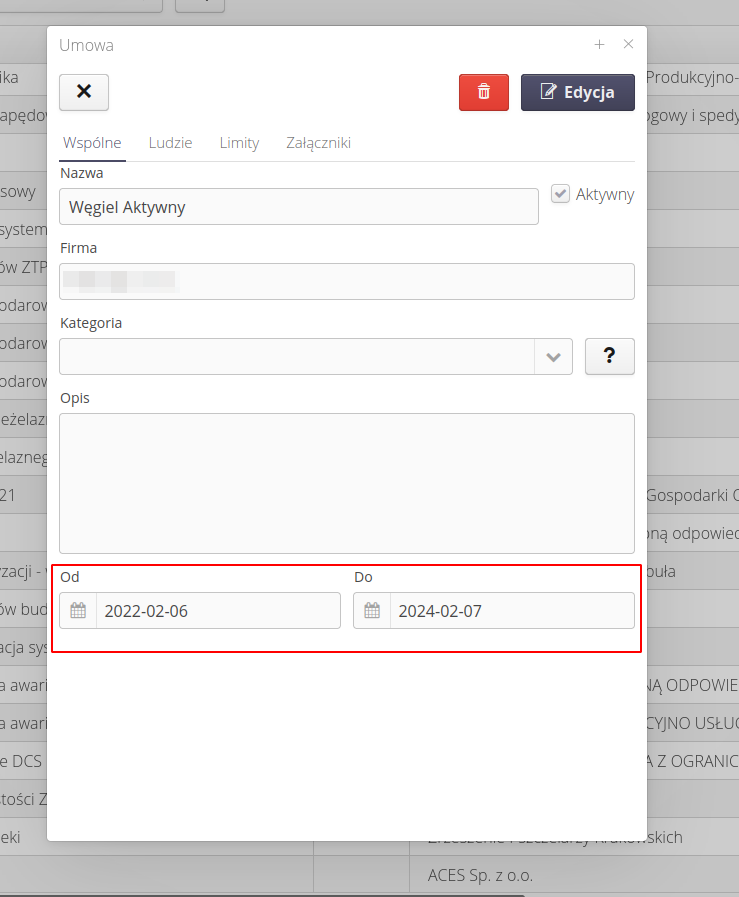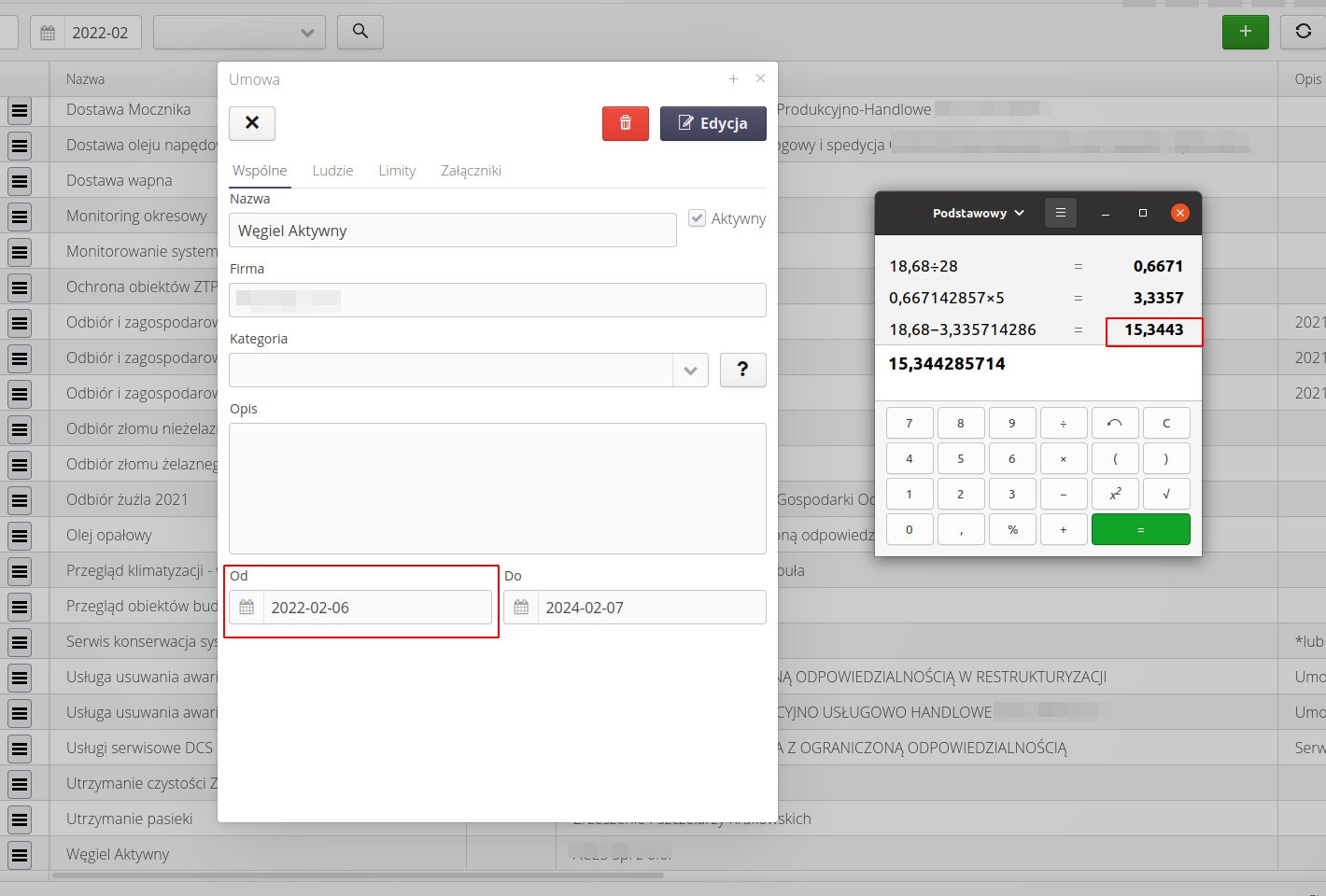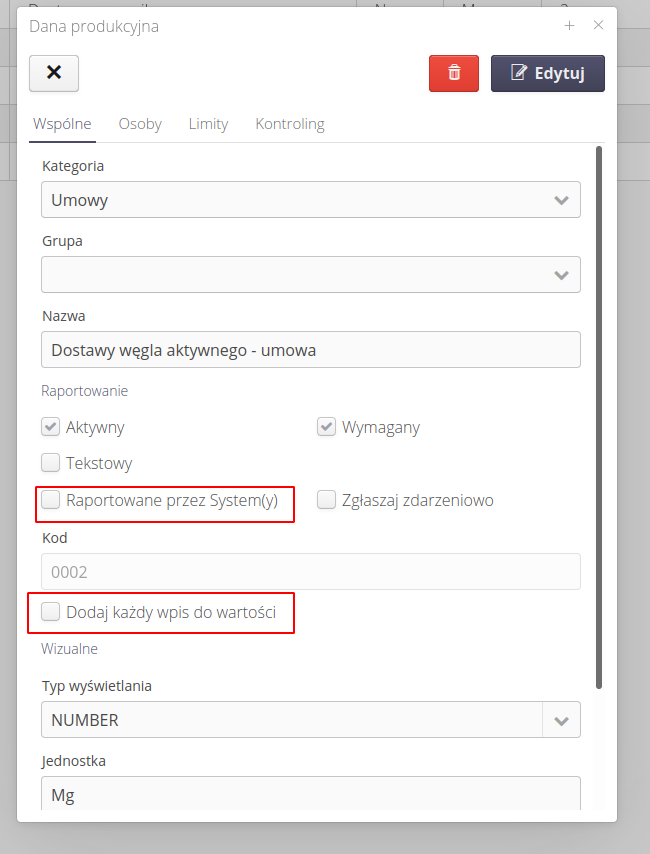Change of limits in supervised contracts
Introduction
The document describes the mechanism of including the values of production parameters to calculate the value of exceeding the limits specified in the contracts entered into the system. The system supervises the implementation of contracts concluded with subcontractors for the supply of materials necessary for the production or collection of finished products generated in the process. Using the mechanism of limits and time limits, it verifies the completeness of contracts. Linking with the module for recording production parameters allows for integrated monitoring of production and legal aspects of concluded contracts.
Explanation of the area
The system has a separate view where users can add existing contracts in the company. These contracts, in addition to basic data, also have the option of specifying boundary parameters: duration and values applicable to the contract. These are often contracts in which the receiving company undertakes to deliver (or collect) a certain amount of material, production component, etc. An example may be the delivery of a certain amount of active agent to the production process in the company or the collection of post-production waste. These contracts are often concluded for a specific period of time, eg 1 year, and for a specific amount of material, eg 30 tons.
After entering these data, the AMAGE system can notify users about reaching a certain level of exceeding the above-mentioned two ranges (time and quantity). The system sends notifications (notifications + email) regarding exceeding the appropriate (definable) levels.
Counting the amount of material
In order to properly notify the user about exceeding a certain percentage level of contract performance, the system must calculate the current consumption/collection of a given material.
| Please note that the system has two types of parameters - 'fixed' parameters in a month, i.e. reported once a month, and 'variable' parameters, i.e. those whose value changes during the month (e.g. adding subsequent transports). |
Depending on the above parameter type, the system adopts a different strategy for calculating the parameter values included in the monitored parameters.
The description below shows the mechanism for calculating the parameter limit value for a given contract if reporting using fixed production data is selected.
-
in the production parameters we have the parameter value for a given month. There it is 18.680 as read by the weighing system.

On the other hand, contracts for this type of parameters calculate the value of the contract in accordance with an algorithm that takes into account the duration of the contract. Depending on the type of parameter fixed or variable, we calculate the current value of the parameter for the contract limit differently.
In this case we have the constant parameter. Thus:
-
the contract is valid from February 6, 2022.

-
this means that for the initial month we do not count the 5 days of the contract (1-5), because then the contract was not yet in force.
-
for the initial and final months of the agreement, the system calculates the values proportionally (!) to the number of days of the agreement.
-
the current measurement is 18.68 (total for the whole month!) At this point, there is only one entry in the system, but it can be divided into the number of days in February (28) - i.e. the first month of the contract.
-
then the value for February (the first month of the contract) is calculated proportionally to the days of validity (i.e. without 5 days)
-
when we multiply these elements, then the result is 15.34, i.e. the value currently accepted as the value of the production parameter to be compared with the limit value for the contract.

All data is currently correct and the calculation is carried out in accordance with the above-mentioned algorithm.
| This is because in the settings for a given parameter, we do not have the "add each entry to the value" option turned on. |
In this case, the system takes general values for a given month (total value) and calculates as above, i.e. taking into account the value of this parameter per day. This works well in those parameters that we report once a month and it is the sum of the values.

Additional information
If the parameter is of the `variable' type, the calculation is made by analyzing historical entries and the total value for a given month is not taken. i.e. for this type of parameter, the history entries for the month determine the values within the term of the contract. For the above example, history entries (weights) from the period 1-5.02 would not be taken into account to count the value of the contract limit (regardless of the number of these entries), but those from 6.02 would.
| The Howto is based on system version 1.17.0.2 (03.2022) and presents features that may not be available in your system. Ask AMAGE about making this functionality available. |
| Due to ongoing development of the system, some screens or configuration files may look slightly different, but will still retain the full functionality described here. This does not affect the core functionality described in this document. |